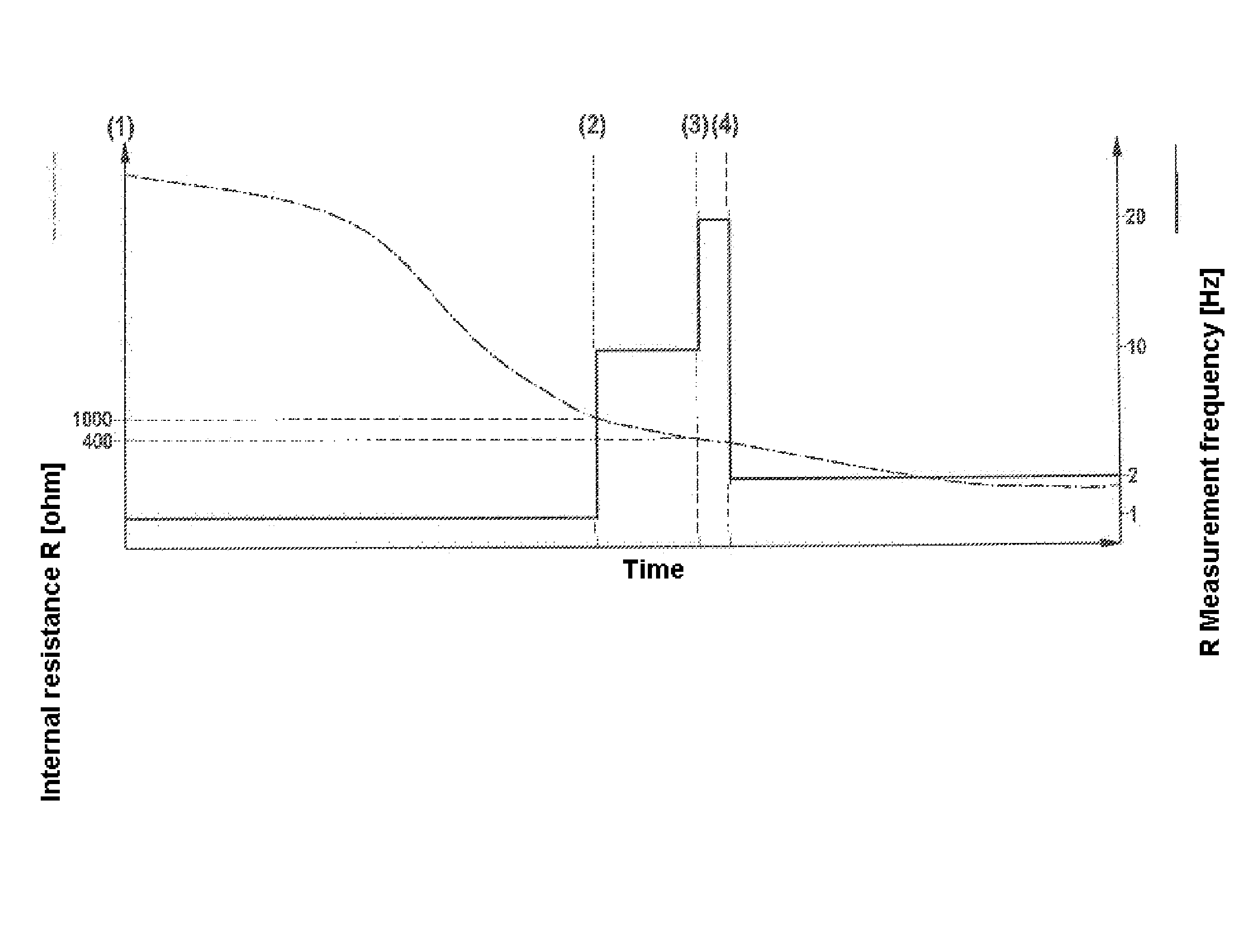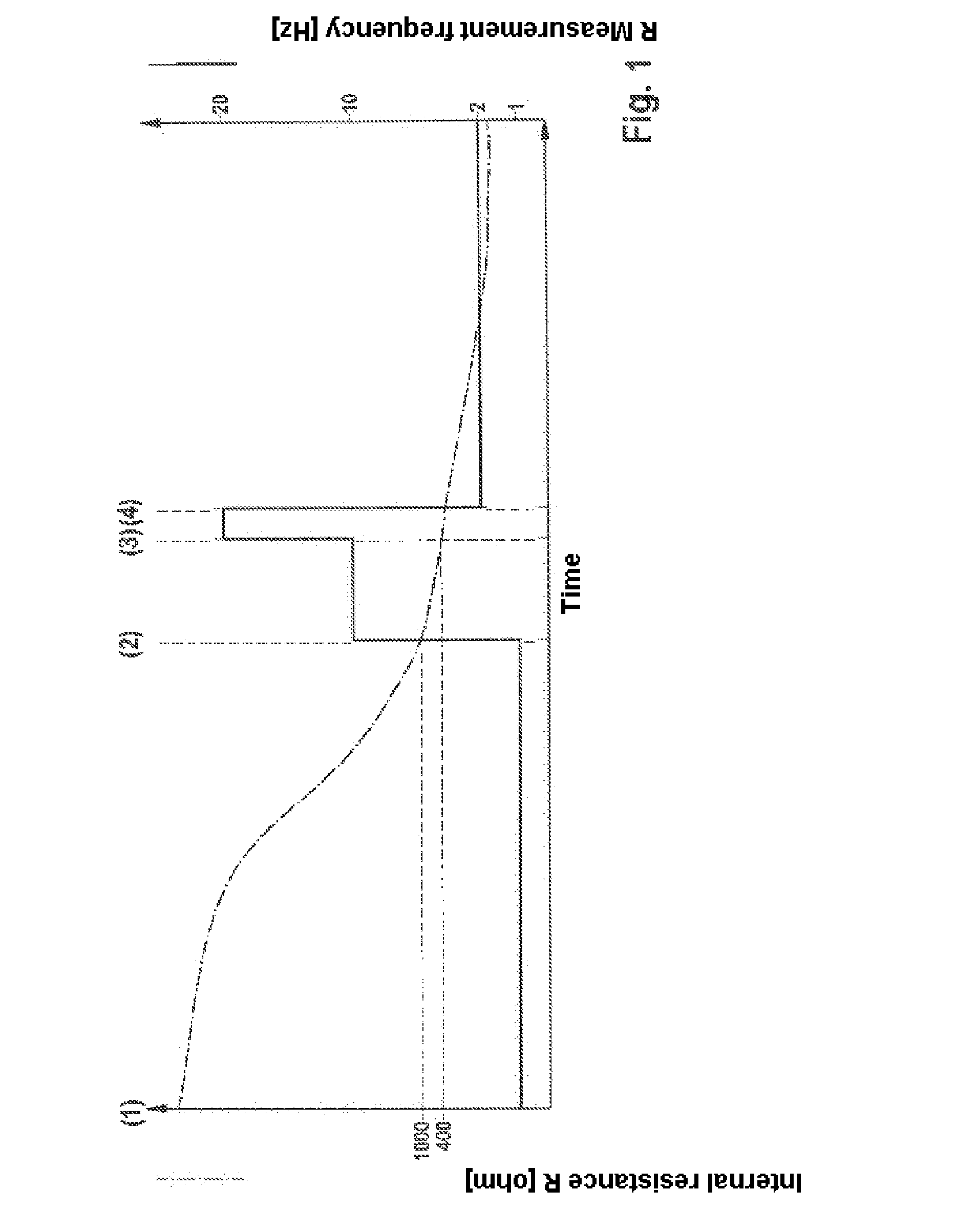Method for detecting the operational readiness of a jump lambda sensor
- Summary
- Abstract
- Description
- Claims
- Application Information
AI Technical Summary
Benefits of technology
Problems solved by technology
Method used
Image
Examples
Embodiment Construction
[0026]The method according to the invention utilizes the internal resistance of a jump lambda sensor as the criterion for detecting attainment of operational readiness of the sensor. A single-valued relationship exists between the sensor internal resistance and the sensor element temperature, the sensor element temperature exceeding a given temperature threshold when the sensor internal resistance simultaneously falls below a corresponding resistance threshold. Operational readiness of the sensor is reached when the internal resistance of the sensor has fallen below a given threshold. According to the invention, the internal resistance of the sensor is already measured before the sensor is operationally ready. Only by measuring prior to operational readiness of the sensor can attainment of operational readiness of the sensor be detected without delay. The sensor internal resistance is measured by applying a pulsed current to the sensor. According to the invention, in order to avoid ...
PUM
 Login to View More
Login to View More Abstract
Description
Claims
Application Information
 Login to View More
Login to View More - R&D
- Intellectual Property
- Life Sciences
- Materials
- Tech Scout
- Unparalleled Data Quality
- Higher Quality Content
- 60% Fewer Hallucinations
Browse by: Latest US Patents, China's latest patents, Technical Efficacy Thesaurus, Application Domain, Technology Topic, Popular Technical Reports.
© 2025 PatSnap. All rights reserved.Legal|Privacy policy|Modern Slavery Act Transparency Statement|Sitemap|About US| Contact US: help@patsnap.com


